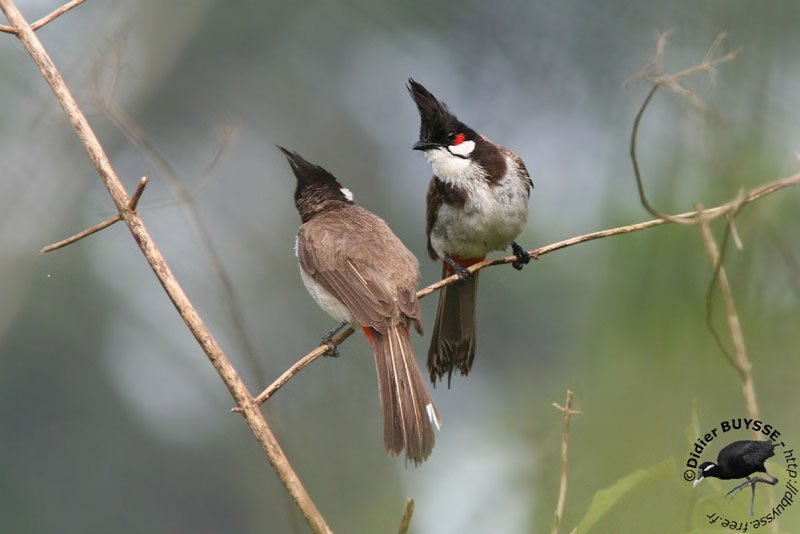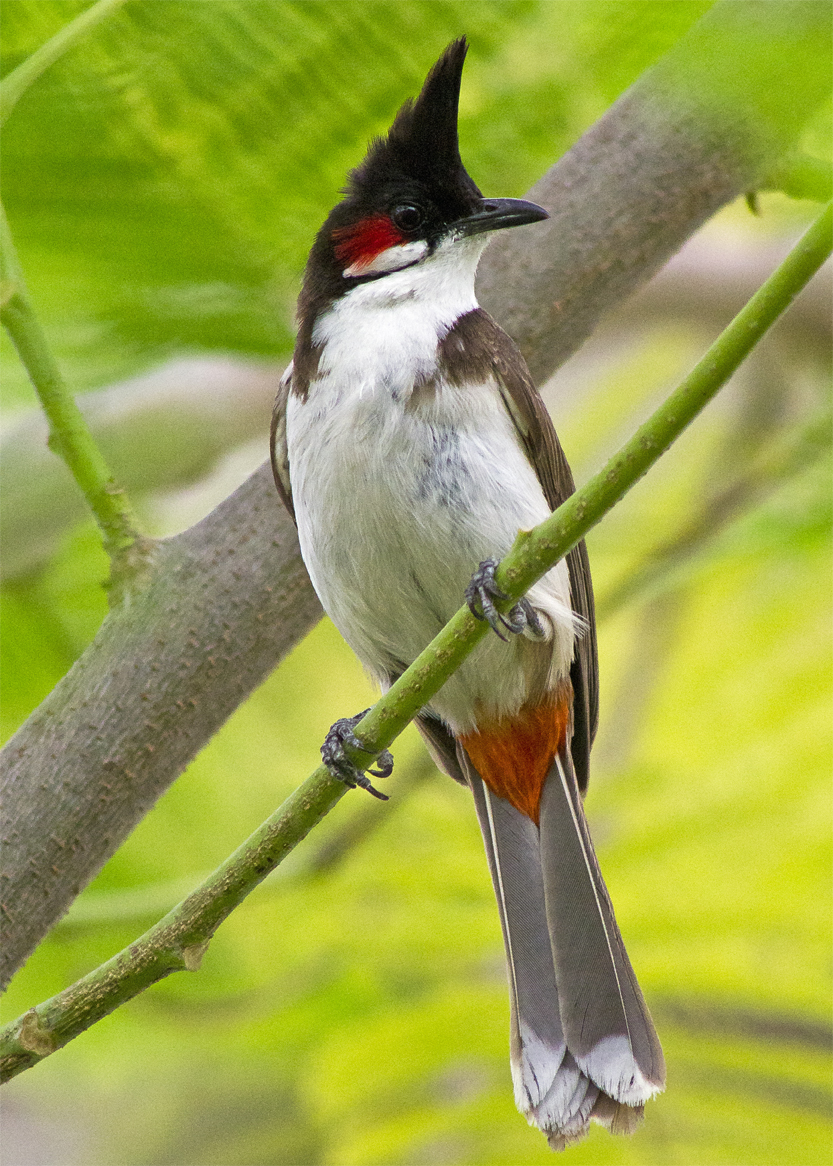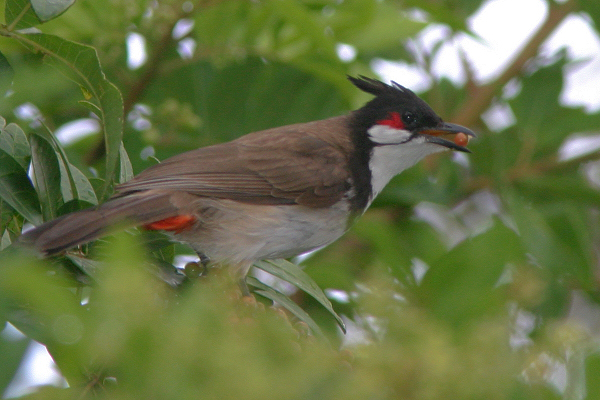
Pycnonotus jocosus
TAXONOMY
Pycnonotus jocosus Linnaeus, 1758. Nine subspecies recognized.
OTHER COMMON NAMES
English: Crested bulbul, red-eared bulbul; French: Bulbul
orphйe; German: Rotohrbьlbьl; Spanish: Bulbul de Bigotes
Rojos.
PHYSICAL CHARACTERISTICS
6.6–9 in (17–23 cm), 0.8–1.0 oz (24–31 g). Sooty black crown
and erect pointed crest. White chick patch encircled with black
line. Brown upperparts, white underparts. Glossy crimson
feathers behind eye (“whiskers”). Sexes alike. Juvenile lacks
whiskers and crest; head is brown.
DISTRIBUTION
Native range Saudi Arabia to Indian subcontinent to southern
China. Introduced in Australia, Singapore. Established populations
in southeastern Florida, O’ahu, Hawaii, sighted in southern
California.
HABITAT
Open forest, scrub jungle, cultivated gardens, and orchards.
BEHAVIOR
Active and noisy, especially in morning and evening. May flock
outside breeding season. Somewhat territorial, adult pairs frequently
observed with third adult foraging nearby. Call a “pettigrew-
kick-pettigrew.” Nonmigratory.
FEEDING ECOLOGY AND DIET
Fruit, also insects, spiders, nectar, and flower buds. Will forage
on ground, along buildings, and on tree trunks.
REPRODUCTIVE BIOLOGY
Probably monogamous. During courtship male lowers head in
a bow, while emitting small croaks. Nests well hidden in low
vegetation and often left unattended until full clutch (two to
five eggs) is laid. Both parents feed young, insects at first, then
fruits and berries.
CONSERVATION STATUS
Not threatened. Common and widespread throughout range.
Florida populations grew from 40 to 50 birds in 1964, to 500
in 1973. Handful of birds escaped in southern California in
late 1960s; 15 counted there in Christmas bird count of 1995.
SIGNIFICANCE TO HUMANS
Fruit-eating a threat to nurseries and agricultural orchards,
75% of some orchid plantations destroyed in Hawaii because
of bud and flower damage. Blamed for drastic reduction in
populations of native Hawaiian white-eyes (Zosterops spp.) on
Mauritius I. Management taken in Hawaii to prevent spread.
When southern California populations increased so dramatically
that they became a threat to citrus crops, the California
Department of Agriculture initiated an eradication program
that has been partially successful. Also problematic out of
range as it disperses noxious weed seeds.
Photo Gallery of - Red-whiskered bulbul




 Animalia Life
Animalia Life